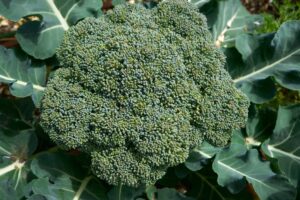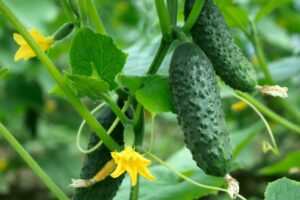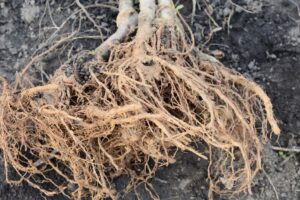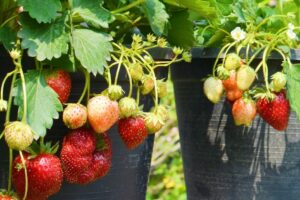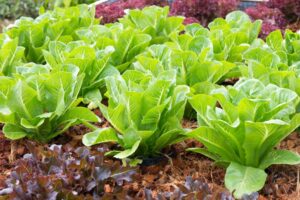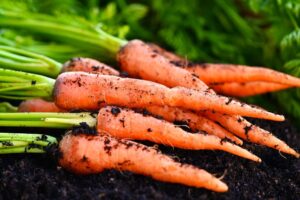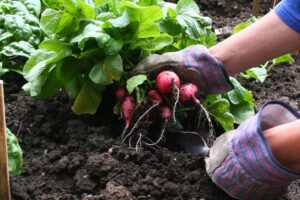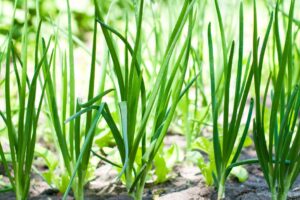Disclaimer: This blog post contains affiliate links. If you make a purchase through these links, I may earn a small commission at no additional cost to you. Learn More. Thank you for supporting our garden community.
Learn How to Grow Peas from Seed in Every Season
Peas are a very rewarding vegetable to grow in any garden. Whether you’re planting them in a backyard garden or a container on your balcony, peas bring vibrant greenery and sweet, tender pods to your table. In this guide, we’ll explore everything you need to know on how to grow peas successfully, from choosing the right variety to harvesting your crop.
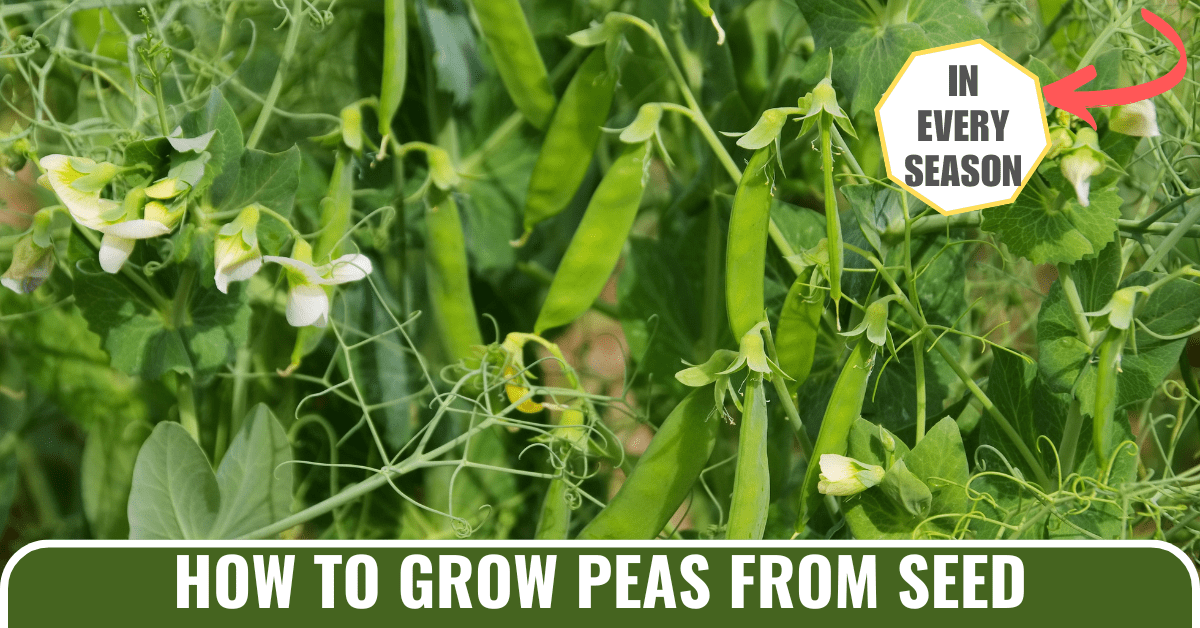
How to Grow Peas in Every Season
Here’s what you’ll learn in this article:
- Choosing the Right Pea Variety: You will understand the differences between snap peas, snow peas, and garden peas, helping you select the best type for your garden.
- Planting Techniques and Timing: This article explains when to plant peas for optimal growth and how to prepare the soil, including spacing, depth, and trellising for support.
- Care and Maintenance Tips: Practical advice is provided on watering, mulching, pest control, and managing temperature to ensure a thriving pea crop.
- Harvesting Guidelines: Clear instructions on how and when to harvest different pea varieties ensure you can enjoy the best flavour and yield from your plants.
Products
To buy high-quality garden seeds, check out Burpee.
For a wide selection of perennial garden plants, check out Nature Hills Nursery.
For gardening equipment, check out Bootstrap Farmer.
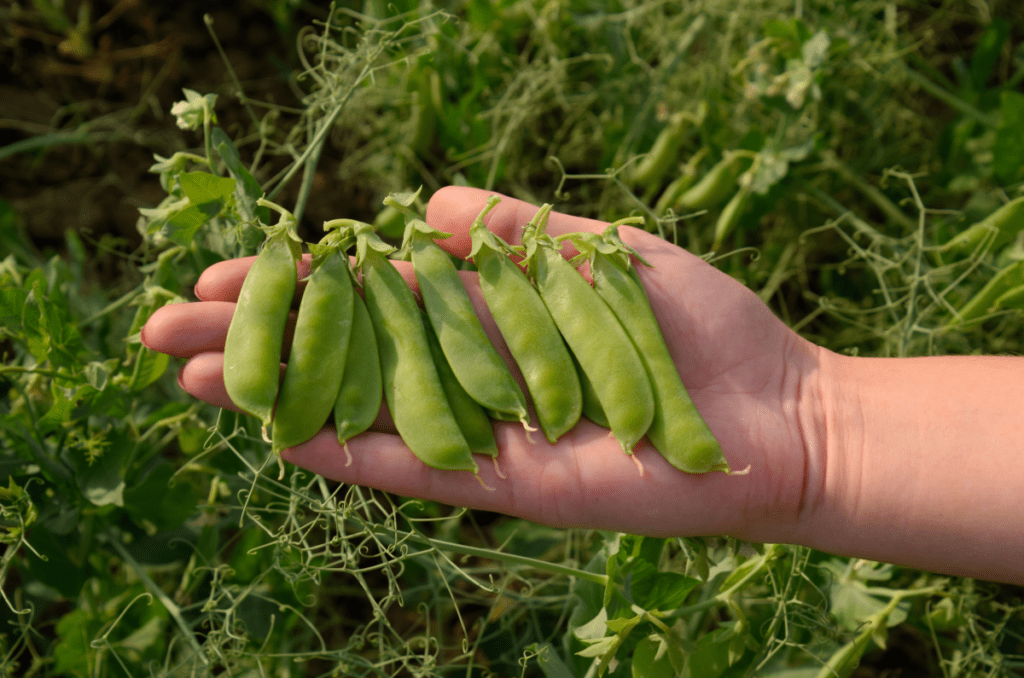
Why Grow Your Own Peas?
Peas are a relatively easy plant to grow, especially for beginner gardeners. They don’t require too much attention to get going and they can produce a bumper crop.
Additionally, peas are nitrogen-fixers, meaning they take in nitrogen from the atmosphere and store it in their roots for use. Not only does this mean you don’t have to fertilize them as often, but it also means that the nitrogen can be used up by other plants when the peas die.
Learn more about this on Wikipedia.
And just to seal the deal, peas do well in all gardening seasons. Although they generally grow better in cool weather, peas can be grown in spring, summer, fall, and winter.
These points make peas a must-grow vegetable for your garden this year!
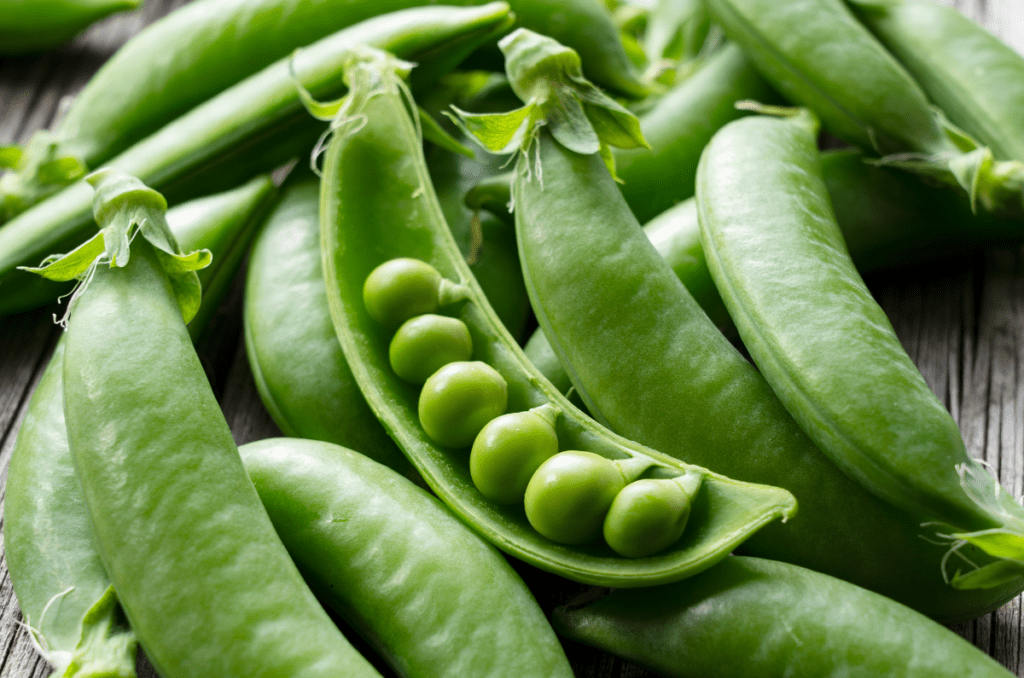
Selecting the Right Pea Variety
It’s important to select the right pea variety that fits your personal preferences and the climate that you grow in.
Snow peas, snap peas, and shelling peas are the 3 main categories of peas, each containing hundreds of different varieties.
- Snow peas: These varieties are grown for their entire under-ripe pod, which is flat and straight.
- Snap peas: These peas are grown for their entire ripe pod, which is rounded from the mature seeds inside. The pod is also typically thicker than others.
- Shelling peas: These varieties are grown for their fully mature seeds (peas) inside the pod. The peas are removed from the pod and the pod is discarded, similar to how you would buy frozen peas from the grocery store.
Here are some popular pea varieties from Burpee Gardening that you need to grow in your garden:
- Sugar Daddy – The first truly stringless edible podded pea.
- Peas-in-a-Pot – Compact variety that grows well in containers.
- Snow Max – Crunchy and tender semi-stringless variety.
Preparing the Soil for Peas
A bumper crop of peas starts with the soil they are growing in.
Select a spot with well-draining soil that is rich in organic matter. This will provide the ideal base for your pea plants. Incorporate plenty of well-rotted compost or manure to improve the texture of the soil and add organic matter.
Keep the organic fertilizers in the shed when growing peas because they don’t need any supplemental nitrogen at all. That’s right, no nitrogen is needed!
Like I mentioned before, peas fix nitrogen in the soil. This means that they take nitrogen gas from the air and convert it into a usable form in the soil for them to absorb.
That being said, it may be difficult for your peas to properly fix nitrogen if the rhizobia bacteria is not present in the soil. This bacteria is what actually converts the atmospheric nitrogen (N₂) into a usable form (NH₃).
If you have never grown peas in your garden before, consider adding a rhizobia inoculant before planting the seeds. Burpee carries a good one with live bacteria: Check out Burpee’s rhizobia bacterial inoculant.
This inoculant will add the bacteria directly into your soil, improving plant growth and yields organically.
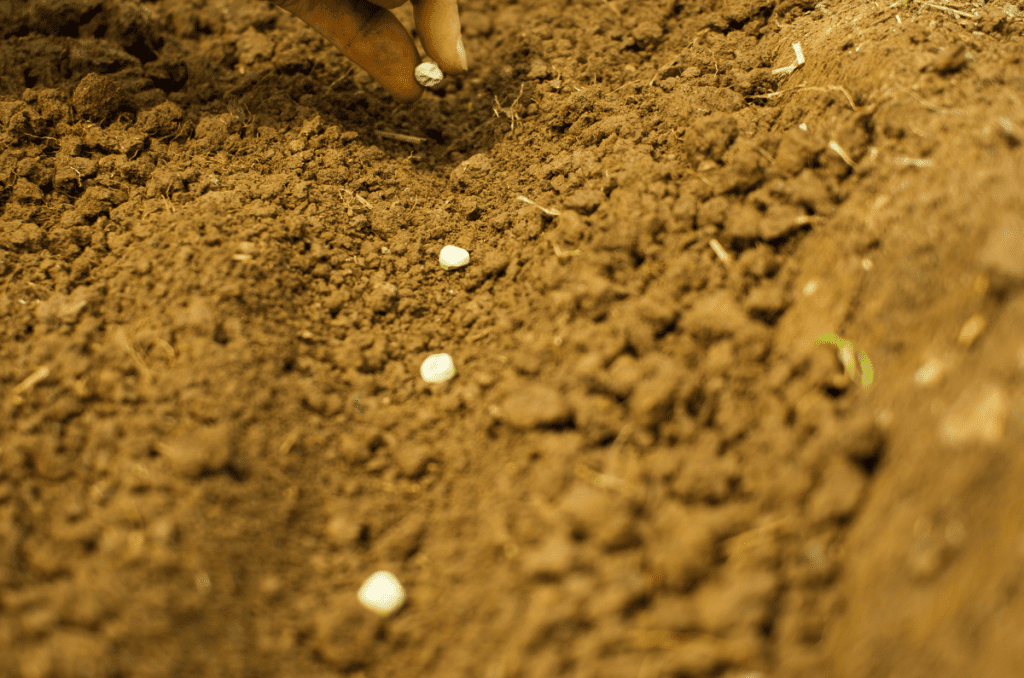
Sowing Pea Seeds
Peas are typically sown directly in the soil, as opposed to starting them indoors. Aim to sow your peas in early spring about 1 month before your last frost date and continue to sow every 2 weeks until you get sick of peas.
Some gardeners will say that you need to soak peas in water before planting them, as to allow the water to fully penetrate the thick seeds, increasing germination rates.
In the article I linked to, Robert discovered that soaking peas may have sped up germination a bit, but the plants did not yield any greater than other plants. Personally, I have found that it really doesn’t affect germination rates, as long as you keep the soil moist when sowing.
When sowing your pea seeds, plant them about 1 inch deep, with a spacing of 2-3 inches between each seed. Allow at least 18 inches between rows to give room for proper growth and air circulation. This is essential for the development of healthy and robust pea plants.
If you are growing in pots or grow bags, you can cluster sow and forget about the 18 inch spacing between rows. I have found that it works very well for containers.
Caring for Peas (Watering, Pruning, etc.)
To make sure that your peas thrive, it’s crucial to provide controlled watering, ensuring consistent soil moisture, especially during flowering and pod development.
It’s important not to overwater or underwater, as to prevent root rot and other moisture-related issues. Check out our guide on watering tips and techniques to learn more.
Additionally, pruning and training your pea plants can encourage branching and higher yields while ensuring proper care and maintenance of your pea garden.
Prune off the 3 D’s: Dead, Damaged, Diseased. Any leaves or stems that are visibly dead, damaged, or infected with a disease, should be pruned off to allow for healthy growth.
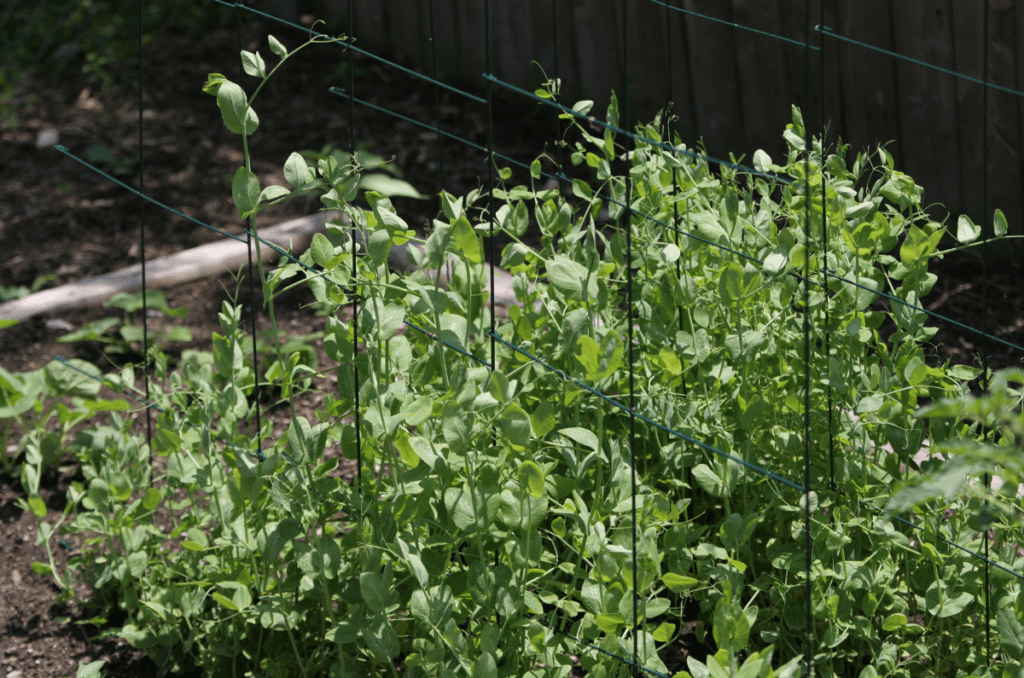
Do Peas Need to Climb?
Because peas have tendrils to grab onto things, they are naturally considered climbing plants.
That being said, most pea varieties would benefit from the support of a sturdy trellis. A trellis with many small vertical and horizontal pieces for the peas to grab is ideal. However, there are dwarf pea varieties that don’t need a trellis to climb at all.
I make my own trellis by putting 2 sticks in the ground on either side of the row of peas, then tie string in between the sticks every 2 inches along the stick’s height.
Also check out our post on tomato trellis ideas as there are many crossovers between tomato and pea trellises.
You can also make a trellis using mesh, chicken wire, or cattle panel, which will provide a very sturdy structure for the peas to climb.
Harvesting and Storage
When the time comes to harvest your peas, it’s essential to determine the exact moment to ensure the best flavour and texture.
- Harvest snap peas when the pods are plump and shiny
- Snow peas are harvested when the pods are flat but still tender
- And harvest shelling peas when the seeds are filled but not overly starchy.
To harvest, simply tug the pods off of the vine without damaging the plants. You can also use scissors if you are worried about damaging the plant.
Additionally, the preservation of your freshly harvested peas is key to enjoying their delicious flavour long after the growing season. Consider blanching and freezing your peas to preserve their freshness into the off-season.
If you are blanching your peas, remove them from the pods and boil for about a minute before submerging them in ice water. This will help to keep their flavour and texture when frozen.
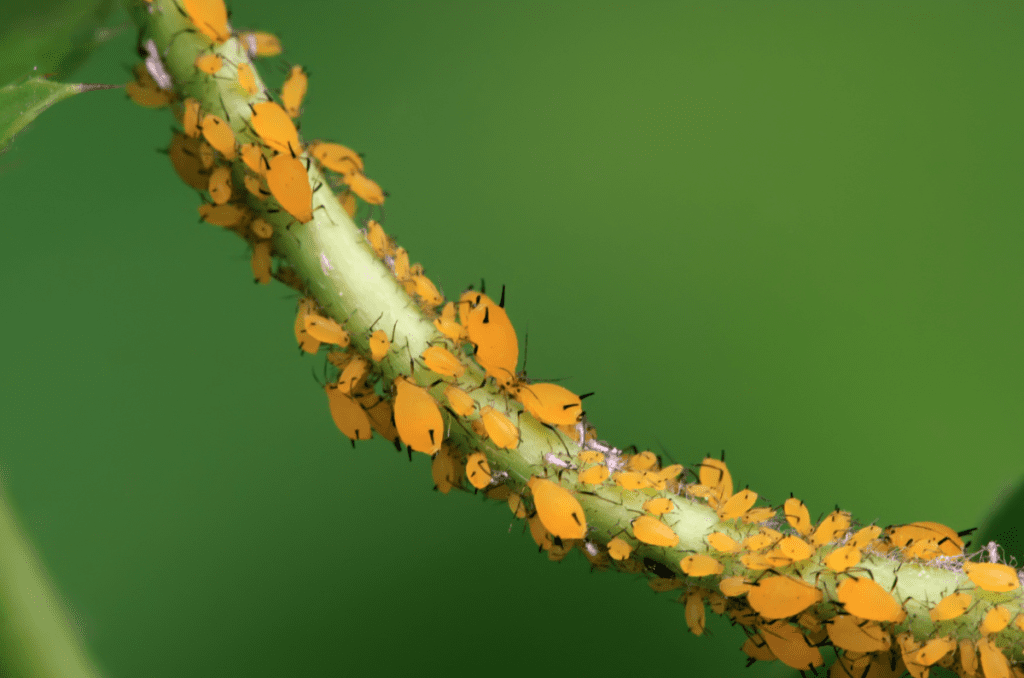
Common Pea Issues
Pests and disease can be common on your pea plants, especially yellowing leaves, powdery mildew, spider mites, and aphids. These issues can destroy your plants and ruin your harvest.
However, they are avoidable. Monitor the growth of your pea plants and constantly check for these issues. Check in between your plants, the undersides of the leaves, and between the leaves and the stem.
These are common hiding places for these pests and diseases, so it is important to catch them early.
If you happen to come across some aphids or spider mites, immediately spray them with an insecticidal soap, such as this Earth Tone Insecticidal Soap from Burpee.
This organic soap is perfect for spraying soft-bodied pests such as the ones mentioned, so don’t be afraid to eliminate them from your pea plants.
Discussion Questions:
- What’s your favourite pea variety to grow in your garden? What makes it special compared to other varieties?
Let us know in the comment section below!
Frequently Asked Questions
Peas are a cool-season crop, so they’re best planted in early spring as soon as the soil can be worked. You can also plant peas in late summer or early fall for a fall harvest, depending on your climate.
Plant your peas in an area with full sun, or at least 6-8 hours of direct sunlight every day.
From seed to harvest, most pea varieties take about 60 days. That being said, there are varieties that require more or less time before you can harvest delicious pods.
Some people don’t know this, but pea tops are actually edible and delicious! The young tops can be pinched off for salad greens. However, if you are growing peas for their pods, don’t pinch the tops, as this may stunt growth.
Even More Gardening Ideas
Here are a few more posts to get the ball rolling in your garden!
- How to Grow Huge and Delicious Carrots
- 100% Success Method for Propagating Grape Vines from Cuttings
- What is Cold Stratification? Here’s What to Know
If you enjoyed this article, make sure to share it with your friends and family members who are also looking to improve their gardening skills. Also, consider signing up for our email newsletter; don’t worry, we won’t send you spam, just fresh gardening tips and tricks every week!
If you want to learn more about gardening, foraging, and nature, check out The Real Gardener on LinkedIn, YouTube, and Pinterest.
Pin this post for later:

